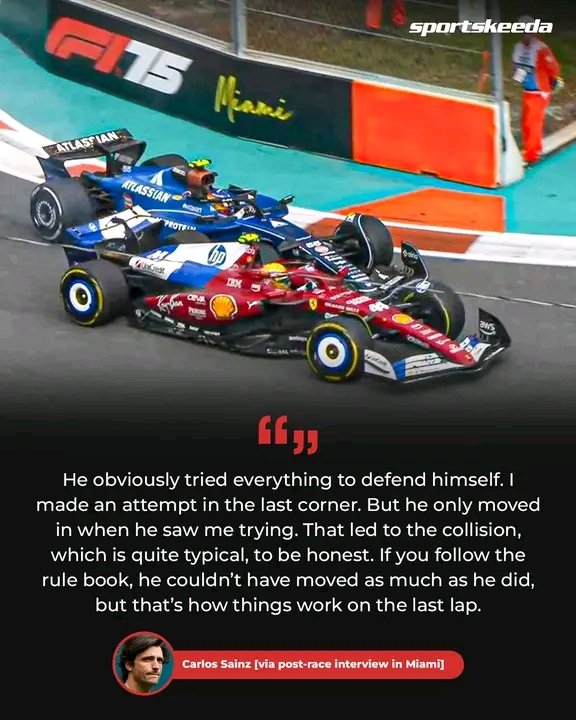Formula 1’s Miami Grand Prix saw simmering tensions boil over as Ferrari’s Carlos Sainz Jr. publicly criticized Lewis Hamilton’s driving after a late-race incident. The two drivers, known for their aggressive on-track battles in the past, clashed during a tense sequence of overtaking maneuvers. Sainz, visibly frustrated after the race, asserted that Hamilton’s move, a late-braking attempt into turn 11, was “unnecessary and dangerous,” forcing him to take evasive action and ultimately costing him valuable track position. The incident, though lacking significant contact, highlighted the growing pressure within the midfield battle and reignited the long-standing rivalry between the two established drivers.
Sainz elaborated on his post-race comments, explaining that Hamilton had ample opportunity to complete the overtake cleanly earlier in the lap. He argued that Hamilton’s decision to attempt the maneuver so late, with Sainz already positioned for the apex, was a reckless gamble that could have easily resulted in a collision. “It’s one thing to race hard,” Sainz stated, “but it’s another to put someone else at risk. There was simply no need for that kind of aggressive move.” Sainz’s criticism was not solely focused on the incident itself, but also on the potential consequences of such aggressive driving, particularly concerning safety standards within the sport.
Hamilton, while acknowledging the incident, offered a contrasting perspective. He maintained that he was fighting for valuable championship points and that his move was within the bounds of acceptable racing. The seven-time world champion suggested that Sainz should have anticipated his approach and defended his position more effectively. This subtle counter-argument immediately set the stage for further discussion and analysis, pitting differing interpretations of racing etiquette and acceptable levels of on-track aggression against each other.
The incident sparked heated debate amongst pundits and fans alike, with opinions sharply divided. Some supported Sainz, highlighting the perceived danger of Hamilton’s maneuver and questioning the level of sportsmanship involved. Others defended Hamilton, emphasizing his competitive drive and the pressure-cooker environment of a high-stakes Formula 1 race. The differing viewpoints underscores the subjectivity involved in judging such incidents, with the lines between hard racing and dangerous driving often blurring.
The aftermath of the Miami incident highlights a persistent issue in Formula 1: defining the acceptable boundaries of aggressive driving. The clash between Sainz and Hamilton serves as a fresh case study, reigniting the debate about track limits, sporting conduct, and the balance between competitiveness and safety. With both drivers vying for improved standings in the championship, the potential for further on-track encounters and ensuing controversies remains high, leaving fans eager to witness the unfolding dynamics of their renewed rivalry.
